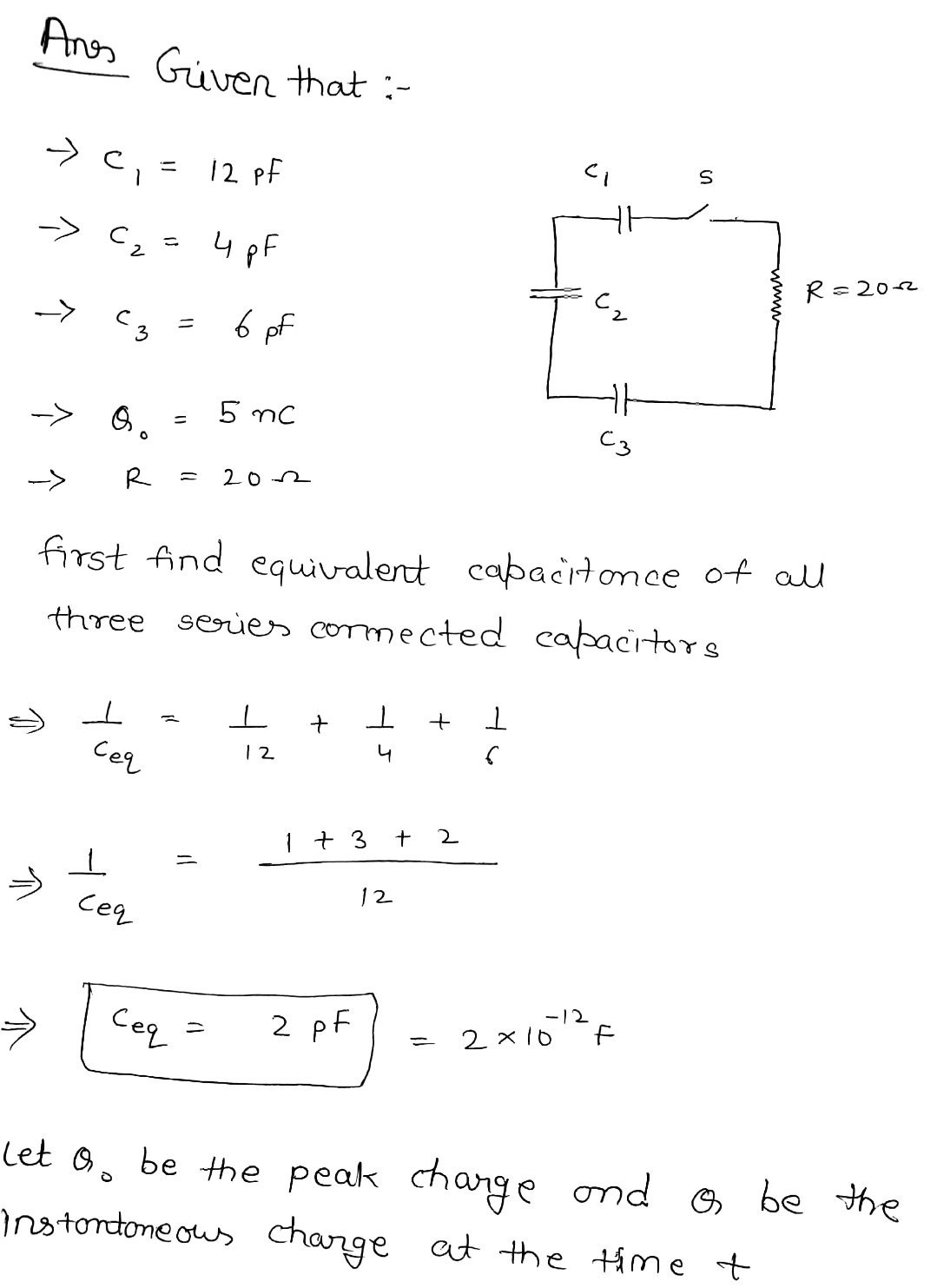G₁₂=4.00pF -11- C₁ = 6.00pF Ci= 12. OpF C₂ = 4.00pF C₁ = 6.00pF In the circuit shown in the figure each copocitor has a charge of monitude 5.000 on its plate R=20.02 After the switch Sis clased, what will be the current in the cruit at the instant that the capacitors their have lost 60,0% of initial stored enancy 0
G₁₂=4.00pF -11- C₁ = 6.00pF Ci= 12. OpF C₂ = 4.00pF C₁ = 6.00pF In the circuit shown in the figure each copocitor has a charge of monitude 5.000 on its plate R=20.02 After the switch Sis clased, what will be the current in the cruit at the instant that the capacitors their have lost 60,0% of initial stored enancy 0
Related questions
Question

Transcribed Image Text:### Circuit Diagram Analysis
#### Circuit Description:
The diagram features a series circuit with three capacitors (C1, C2, and C3) connected with a resistor (R) and a switch (S).
#### Components:
- **Capacitors:**
- \( C_1 = 12.0 \, \text{pF} \)
- \( C_2 = 4.00 \, \text{pF} \)
- \( C_3 = 6.00 \, \text{pF} \)
- **Resistor:**
- \( R = 20.0 \, \Omega \)
#### Given Conditions:
- Each capacitor is initially charged with a charge magnitude of \( 5.00 \, \text{nC} \) on its plates.
#### Problem Statement:
- After the switch \( S \) is closed, calculate the current in the circuit at the moment when the capacitors have lost 60.0% of their initial stored energy.
#### Constants and Formulas:
- Charge of an electron/proton:
- \( q_e = -1.60 \times 10^{-19} \, \text{C} = -e \)
- Permittivity of free space:
- \( \varepsilon_0 = 8.85 \times 10^{-12} \, \frac{\text{C}^2}{\text{N} \cdot \text{m}^2} \)
### Explanation of Concepts:
This exercise involves understanding the discharging process of capacitors within a closed circuit and calculating the current based on energy dissipation. Calculating this involves understanding the relationship between stored energy in a capacitor and its discharge rate through a resistive load.
### Learning Objective:
- Calculate electric current in discharging circuits.
- Apply the concept of energy loss in capacitors.
This analysis is intended for students learning about electric circuits and provides a practical application of capacitor discharge equations and energy concepts.
Expert Solution
Step 1

Step by step
Solved in 3 steps with 3 images
